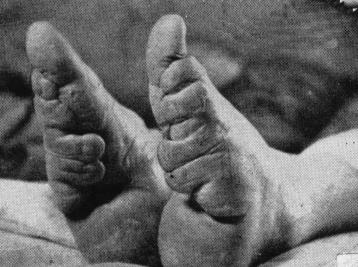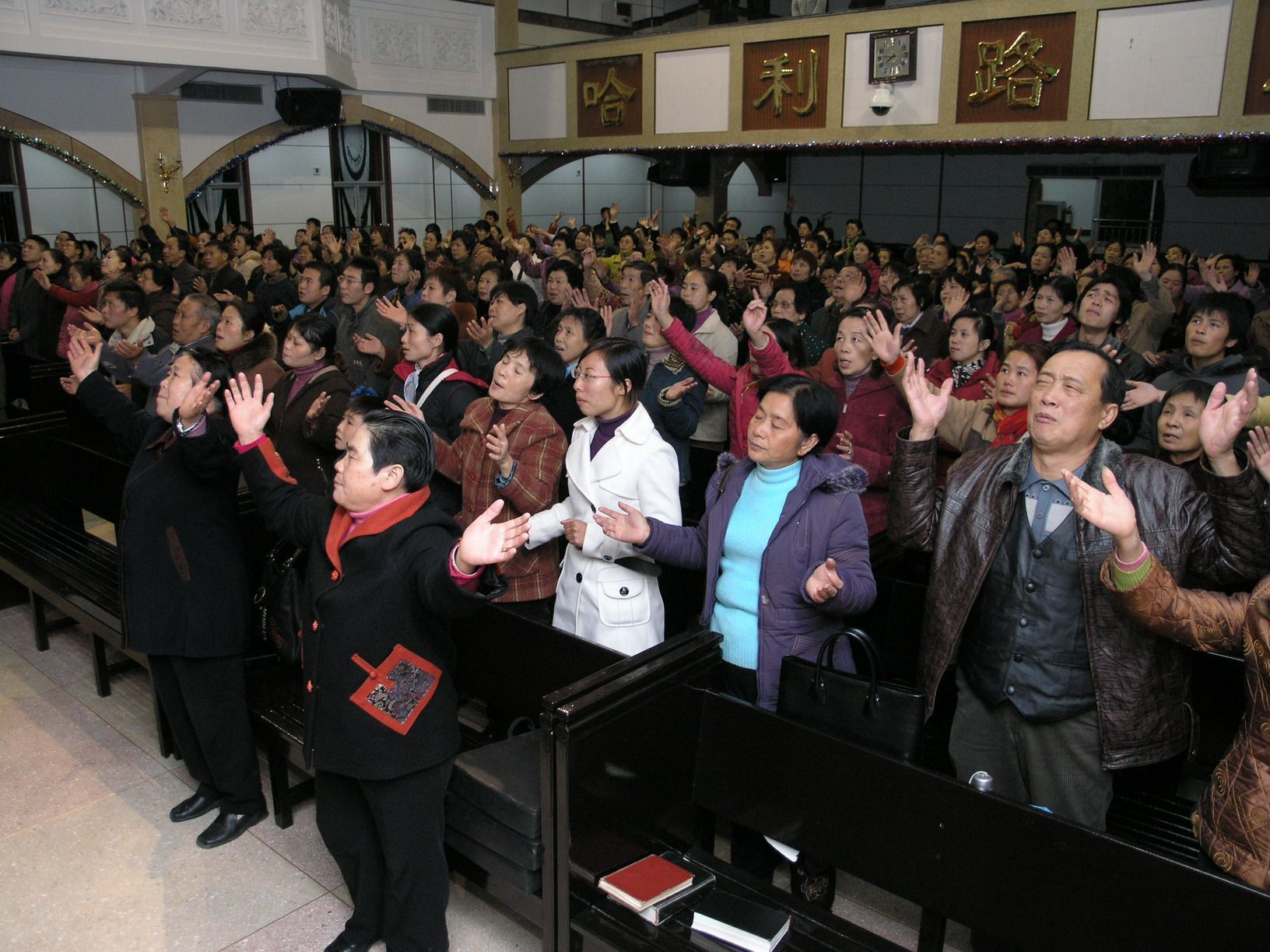1900s
Anti Foot-Binding Societies

A woman's disfigured feet after years of being bound.
Although the churches in Zhejiang were understandably shocked by the Boxer atrocities in the summer of 1900, the gospel rebounded surprisingly quickly, and by the following year reports were received telling of new growth and interest in Christianity. One of the many effective ways the Christians used to reach people was through anti foot-binding societies.
For centuries, Han culture had dictated that women must have petite feet, as it was considered a disgrace to have normal size feet. Bound feet were seen as a symbol of beauty, especially among wealthy families where women's feet were bound in order to display their high social status, signifying that they didn't need to use their feet to work.
Young girls routinely had their feet forcibly bound and bandaged, to stop their growth. The result was often a lifetime of misery for the women, as their deformed feet caused them to shuffle about in tiny steps.
Girls' schools established by the missionaries were the first to abolish the foot-binding practice among students, and non-Christian schools gradually followed their example. At Wenzhou, the local Bible woman led an anti foot-binding campaign. As she preached the gospel, encouraging women to both unbind their feet and surrender their hearts to Christ, the churches grew substantially. In many places the unbinding of feet was taught as an act of repentance, and new believers were instructed to show their allegiance to Christ by forsaking the wicked custom.
A Christian woman from a wealthy family was brought to tears because, although she had been tormented by her bound feet all her life, she had nevertheless also basked in the social standing the practice allowed her to enjoy. At a meeting, the woman reportedly prayed out loud,
"confessing with tears and sobs that her two feet were a disgrace to the Church. She finally said, 'Lord, make me willing to unbind them, and forgive my sin in this.' It was very touching, and there were not many dry eyes when she finished. Finally, nearly all who had not already unbound their feet did so.... We have, altogether, over 120 signatures of Christian women and inquirers who have unbound their feet since believing the gospel, and there are quite a few who have unbound without signing. This signature also pledges them not to bind their daughters' or daughters'-in-law feet."[1]
Foot-binding was ultimately outlawed in China, although old women with bound feet can still occasionally be seen hobbling along the streets of China's cities today.
The Church Soars Again
Whereas many commentators lamented the future of the missionary enterprise in China after the Boxer massacres of 1900, the Church soon found its way back on track and the years immediately following 1900 saw strong growth throughout Zhejiang. What wicked human beings intended for evil God had turned for good, and many people testified that the godly and calm reactions by Christians to the brutal treatment they received had impressed them deeply and helped them see the truth of the gospel.
The first decade of the twentieth century had commenced with the diabolical massacre of many Christians, but it drew to a close in much more encouraging circumstances, with revival breaking out in various locations throughout Zhejiang. Missionary Edward Hunt reported how the churches in Wenzhou grew in the post-Boxer period: "From January 1898, until December 1906, about 700 souls have entered the church by baptism, making now a membership of nearly 900 [in Wenzhou City]. About 500 of these are men, and the remainder women.... In addition to these church members, I suppose that there are about 1,500 regular attendants at our services."[2]
In May 1909, a missionary at Yongkang in the central part of the province excitedly reported how the Holy Spirit had visited their small church with great power:
"We have had a great blessing. We have never seen the like of it throughout all our experiences in China. What happened was beyond all our anticipations. When we were in the midst of it, it was difficult to realize if we were dreaming or if the whole thing was a reality....
The confessions of sin, the crying, sobbing, and the extreme agony of not a few began and continued for two days. And what confessions they made! We were struck with amazement. They confessed to murderous intention, adultery, opium-taking, stealing, deceiving, lying, pride, hatred, jealousy, covetousness, indolence, hypocrisy. What awful revelations; it was difficult to believe our ears, to hear preachers, elders, church leaders, and members making confession of sins we thought they had given up long ago.... It was the first time the white light of God's presence had illuminated their hearts and enabled them to realize their sins, as they had never done before."[3]
Throughout Zhejiang the work of the CIM had continued to steadily grow. By 1903, the mission reported a total of 3,756 baptized believers meeting in 90 churches throughout the province. Since the commencement of their work in Zhejiang in 1857, the CIM had baptized 6,607 people into the faith.[4]
James Meadows had arrived in China in 1862. In 1903, when he had already served more than 40 years in Zhejiang, Meadows reminisced about the astonishing changes he had witnessed in the province during his long career: "When I first arrived in Zhejiang, in 1862, there were not 4,000 Protestant Christians in all of China. Ningbo was the only place properly occupied by missionaries. Now, thank God, we have 26 stations, 111 out-stations, and 73 missionaries...and 254 native helpers."[5]
The Catholic churches, meanwhile, had also grown in Zhejiang, with the work being administered by the Lazarists from Ningbo City. By 1907 they reported 25,126 believers, meeting in 153 churches throughout the province.[6]
© This article is an extract from Paul Hattaway's book 'Zhejiang: The Jerusalem of China'. You can order this or any of The China Chronicles books and e-books from our online bookstore .
1. Mrs. E. Hunt, "Conversions Among the Women at Wun-chau," China's Millions (September 1901), p. 135.
2. Edward Hunt, "Encouragements, Difficulties, Needs, at Wen-chow," China's Millions (June 1907), p. 95.
3. "News of Revival in Various Parts of China," China's Millions (May 1909), p. 69.
4. "Rough Summary of Statistics," China's Millions (July-August 1903), p. 111.
5. J. J. Meadows, "Reminiscences of the Early Days of the CIM," China's Millions (February 1903), pp. 68-9.
6. Bertram Wolferstan, The Catholic Church in China (St. Louis, MO: Sands & Co, 1909), p. 450.





